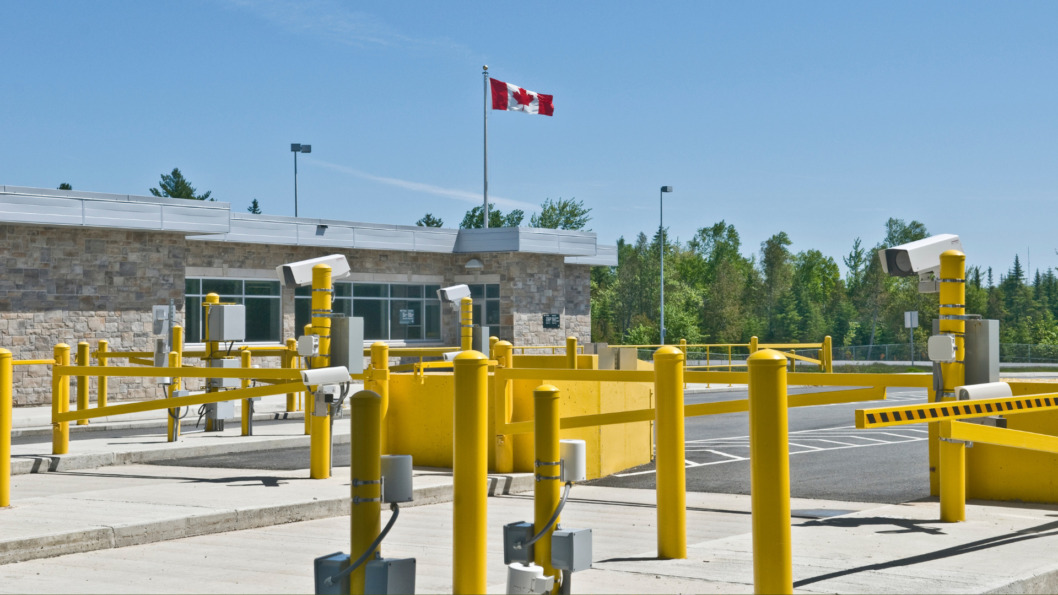Shipping to Canadian shoppers can be a daunting task for eCommerce merchants. With various regulations, duties, and shipping costs to consider, it is essential to establish best practices to ensure customer satisfaction while maintaining profitability. In this article, we will discuss the importance of shipping from Canadian fulfillment centers, considerations for free shipping promotions, selecting the right courier, and choosing the best 3PL partner.
Shipping from Canadian Order Fulfillment Centers
Shipping orders from Canadian order fulfillment centers can significantly benefit both the merchant and the customer. When Canadians receive an order with a declared value of over CAD $200, they are likely to be charged customs or duties upon delivery. Couriers such as UPS and FedEx are known to charge additional fees to collect these taxes and duties. This often results in the shopper refusing the package altogether, and the seller is forced to refund the order, ultimately losing the sale. To mitigate this, merchants should consider importing products and storing them at a Canadian-based 3PL company. By shipping from within Canada, shoppers are not charged any additional duties and taxes upon delivery, thus reducing the return rate on Canadian orders.
It is also important to note that using USPS to ship to Canadian shoppers from the USA is rarely a good idea. The parcels will be handed off from USPS to Canada Post for delivery, which can result in disjointed tracking numbers and potential delays, particularly during busy seasons. Carriers like UPS and FedEx will deliver parcels without handing them off, ensuring a more seamless delivery process. This is an important consideration if a merchant opts to ship products to Canada from the United States.

Canadian Customs has the authority to hold any parcel indefinitely. This is a crucial point for merchants shipping from outside of Canada to communicate with their Canadian shoppers. Clear communication about potential delays due to customs processing is essential. Failure to do so can result in negative reviews and a poor customer experience, especially if a buyer is expecting to receive a package by a specific date for a holiday, birthday, or other special event. By being transparent about the potential hurdles in the shipping process, merchants can set realistic expectations and foster a positive relationship with their Canadian customers.
Understanding Canadian Shopper Expectations
When it comes to online shopping, the expectations of Canadian consumers can vary greatly depending on their location. Generally, Canadians expect their orders to be processed and shipped promptly, similar to American consumers. However, the delivery time expectations can differ significantly.
For those living in rural or remote areas, there is an understanding that parcels may take longer to arrive. The lack of infrastructure and the vast distances that need to be covered mean that next-day delivery is not a common expectation. These consumers are usually accustomed to waiting a bit longer for their packages to arrive.
On the other hand, consumers living in city centers and metropolitan areas like the Greater Toronto Area (GTA) and the Greater Vancouver Area (GVA) have higher expectations when it comes to delivery times. The presence of better infrastructure and more delivery options in these areas means that shoppers often anticipate shorter delivery timeframes, similar to what American consumers expect. This is a critical distinction that merchants need to consider when setting delivery expectations for their Canadian customers.
By taking into account the geographical and logistical differences that exist within Canada, merchants can better manage customer expectations and improve overall satisfaction. This includes providing accurate and clear information on delivery timeframes during the checkout process, and being transparent about any potential delays that may occur.
Considerations for Free Shipping Promotions
When it comes to promotions offering free shipping across Canada, merchants must tread carefully. The cost of shipping a package can vary greatly from one location to another. For example, shipping to remote Canadian addresses can be ten times more expensive than shipping the same parcel to the Greater Toronto Area (GTA). All merchants should familiarize themselves with remote location postal codes to avoid any surprises when setting up their shipping policies and charges. While some products may be suitable for free shipping promotions in certain areas, others may not be feasible. This can be a significant challenge for merchants shipping to Canadian consumers for the first time, especially when they are accustomed to USPS Priority Flat Rate shipping, which does not exist in Canada from Canada Post or any other carrier.
Selecting the Right Courier and Shipping Service
Understanding the Canadian landscape and selecting the right courier is crucial. Canada is a vast landmass, and not all carriers have the capability to deliver parcels to remote locations in a cost-effective manner. Choosing the same courier across all orders can have negative ramifications for the merchant. While a courier may be cost-effective when shipping to a major city or a specific part of a province, they can charge excessively for another. This can easily wipe out any profit margins and put an order in the red. It is also important to note that Canada Post Lettermail does not offer tracking, unlike USPS First Class. This is a crucial distinction, as eCommerce consumers typically expect to receive a tracking number as soon as an order is processed. Merchants must take this into account when shipping to Canadian consumers. InterFulfillment offers a RateShop feature that allows their system to automatically shop for the most cost-effective rate for each parcel, ensuring that the best carrier and service are selected.
Delivery Timeframes
Delivery timeframes can be just as tricky in the Canadian shipping landscape. Online shoppers typically expect items to be delivered in a timely fashion or at least have an estimated timeframe when checking out on a website. This is not always possible in Canada. One shipping service may result in a parcel being delivered the next day to a certain address, while another address may cost more and take over a week or even longer for delivery. This comes down to understanding the landscape and the various carriers and services offered.
Canada Post offers carbon-neutral shipping, with many tracking emails featuring a badge indicating that a shipment will be carbon-neutral. This may be an important value-added aspect of shipping for consumers. Generally, Canada Post is the most suitable across the board when it comes to shipping in Canada. However, there are instances when using UPS, a company that continues to improve its Canadian infrastructure and shipping capabilities, may be more cost-effective. The fact that a large number of Canada Post shipments are carbon neutral, paired with the fact that Canada Post is typically the most suitable carrier with their Expedited Parcel service, may be reason enough for certain merchants to choose them over others.
Choosing the Right 3PL Partner
Selecting the appropriate third-party logistics (3PL) partner is crucial to the success of any e-commerce merchant shipping to Canada. The ideal 3PL provider will offer a range of comprehensive order fulfillment services that can be tailored to meet the specific needs of the merchant and their Canadian customers. This includes warehousing, pick and pack services, and transportation management. By leveraging the expertise and infrastructure of a 3PL partner, merchants can optimize their logistics operations and focus more on growing their business.

In addition to logistical support, a good 3PL partner should also serve as a knowledgeable guide for merchants navigating the complex landscape of shipping to Canadian consumers. This includes understanding the intricacies of customs regulations, taxes, and duties, as well as the various shipping options available to reach customers across Canada’s vast and diverse geography. The 3PL provider should take the time to learn about the merchant’s products, asking detailed questions about the shape, size, and weight of typical parcels to determine the most efficient and cost-effective shipping methods.
They should help the merchant strike the right balance between shipping costs and delivery times. This is especially important in the Canadian market, where shipping costs can vary significantly based on the destination. A suitable Canadian 3PL partner will have established relationships with various carriers and can negotiate competitive rates on behalf of the merchant. They should also offer a range of shipping options, from standard to expedited, to meet the expectations of different customers.
One way to ensure that you are choosing the right 3PL partner is to request a comprehensive quote that outlines all the costs associated with shipping your products to Canadian customers. Companies like InterFulfillment can provide detailed cost analyses that take into account all the variables involved in the shipping process. This will provide a clear picture of the costs involved and help you make an informed decision based on your business needs and budget.
Conclusion
In conclusion, shipping to Canadian shoppers requires a strategic approach. By shipping from Canadian fulfillment centers, considering the implications of free shipping promotions, selecting the right courier, and choosing a suitable 3PL partner, eCommerce merchants can successfully navigate the Canadian shipping landscape, ensuring customer satisfaction and profitability.
 Ready to start shipping orders to your customers from Canada? InterFulfillment has you covered. Request your quote today or email us at sales@interfulfillment.com!
Ready to start shipping orders to your customers from Canada? InterFulfillment has you covered. Request your quote today or email us at sales@interfulfillment.com!
Adayra Lopez is the Sales Manager at InterFulfillment.

